|
Formation
Description
Nestled between
two red beds of the upper Schnebly Hill Formation is a marine
sequence consisting of a colorless gray and massively bedded
limestone. The unit varies in thickness from about 100 feet at
Fort Apache Arizona, and pinches out to zero west of Sedona.
The Fort Apache Limestone is a Permian sequence representing
a marine transgression onto the Schnebly Hill dunes which deposited
a thin bed of limestone. Fossils are very scarce in this formation,
in Strawberry for example, the massive beds visible on the north
west end of town while driving north on Highway 87 are completely
unfossiliferous. On the Indian reservation however, the typical
Permian fossils begin to appear, including large brachiopods,
sea urchin material, gastropods, and occasional cephalopods.
There are few outcrops of this formation OFF the reservation
(which you can collect on) which contain fossils however, and
we have collected at these sites some remarkable marine invertebrates.
Fossil collection
and preservation
The Fort Apache
Limestone is a light gray in color and grades from nearly pure
carbonate rock with some sand and silt on the reservation, to
a much more dolomitic limestone (doesn't do well in acid) as
you go westward towards Sedona. The amount of terriginous material
in the limestone also increases as you go westward. Rock is collected
only if it shows a surface weathering of small silicified micro
fossils such as larger clams pieces and urchin spines. You cannot
be certain that any good fossils will be had from a given rock
in the field, so many pieces are collected from a variety of
locations to increase the odds of getting a richer sampling.
Back home, The
rock is put in plastic bins and filled with water so they are
just covered. Then the 30% muriatic acid available from ACE Hardware
or a building supply (Dont get the odor free stuff, its no good)
such that the dilution is roughly one part acid to three parts
water. The acid will attack the limestone vigorously and free
the enclosed silicified fossils. Any calcified or phosphatized
fossils are gonners. You wont find conodonts, or sharks teeth!
After 24 hours, the bubbling stops and the water is clear and
neutralized. Dump out the clear top liquid and if required add
more water and acid until the rock is all dissolved. Finally,
we use three different size metal sieves to wash out the dirt
and sand, but leave the tiny micro fossils and anything larger.
The washed material is set out to dry in a Teflon coated baking
pan in the Sun.
Sorting the
fossils is done with an optivisor flip magnifier for the larger
material, but many hours can be spent on going through the finer
material under the stereo microscope - One pea sized scoop at
a time. Fossils are picked out with fine tweezers or a wet toothpick
for the most delicate such as some of the ostracod shells. Fossils
are then sorted and placed in small snap lid pill bottles from
Walgreens. Larger specimens are put in small cardboard boxes
or directly on the fossil shelf. The smallest fossils are a fraction
of a pinhead in size, and the largest one so far is a huge 10
inch spiral nautiloid.
Articles on
Fort Apache Limestone Fossils:
 |
Site 6- Locality - Highline Trail
A small section of the moderately fossiliferous outcrop in detail
The article can be found here.
|
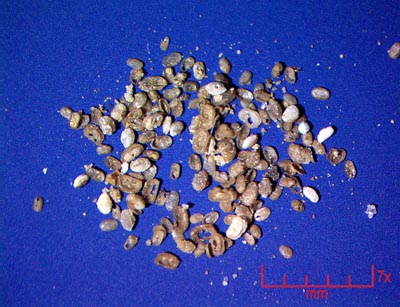 |
Site 5 - Locality - Highline Trail
A small section of the moderately fossiliferous outcrop in detail
The article can be found here.
|
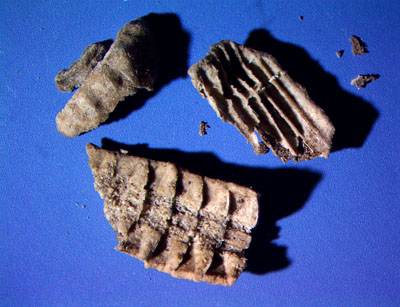 |
Site 4 - Zone 1 Locality - Highline Trail
A small section of the moderately fossiliferous outcrop in detail
The article can be found here.
|
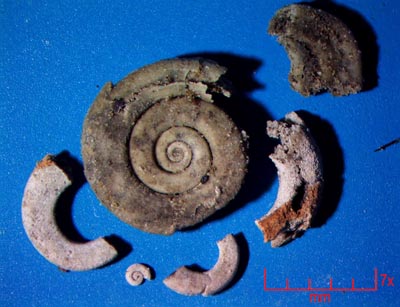 |
Site 3 - Zone 2 Locality - Highline Trail
A small section of the moderately fossiliferous outcrop in detail
The article can be found here.
|
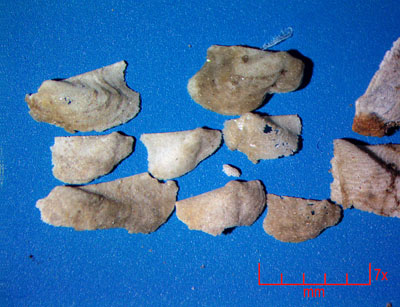 |
Site 3 - Zone 1 Locality - Highline Trail
A small section of the richly fossiliferous outcrop in detail
The article can be found here.
|

|
Site 2 - Zone 2 Locality - Highline Trail
A small section of the richly fossiliferous outcrop in detail
The article can be found here.
|
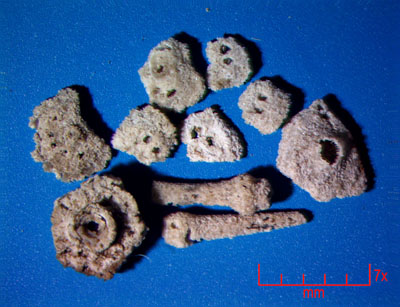
|
Site 2 - Zone 1 Locality - Highline Trail
A small section of the richly fossiliferous outcrop in detail
The article can be found here.
|
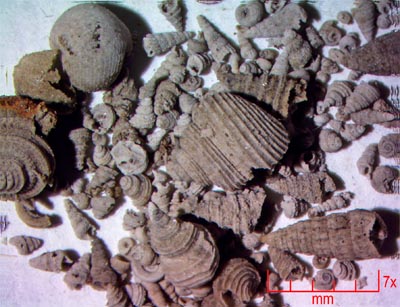
|
Site 1 Locality - Highline Trail
A small section of the richly fossiliferous outcrop in detail
The article can be found here.
|
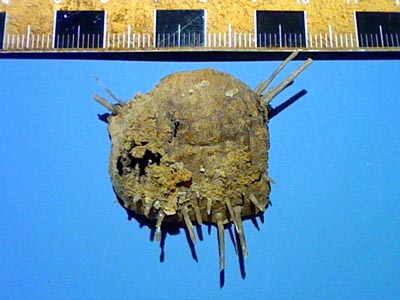 |
New Locality - Near OW Ranch
A first sampling of the scattered outcrops just south of the Rim.
The article can be found here.
|
 |
Ostracods
Hundreds of these small crustaceans in several different types.
The article can be found here.
|
 |
Trilobites
Half a dozen pygidiums, free cheeks, glabellas, and numerous
pieces have been found.
The article can be found here.
|
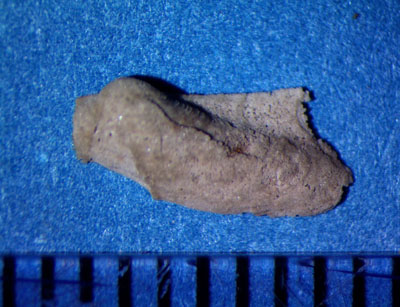 |
Pelecypods
Most are very small, but this is the second most common complete fossil
found in the formation. But large amounts of shell fragments dominate the rocks.
The article can be found here.
|
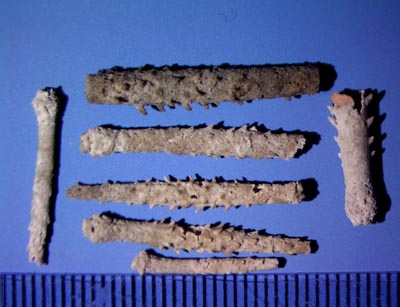 |
Echinoids (Urchins)
Spines, plates of possibly three species were found here, all of small
1 - 2 inch sized urchins. Preservation was liminted by crystalization but
some good spines were located in the silicified fines.
The article can be found here.
|
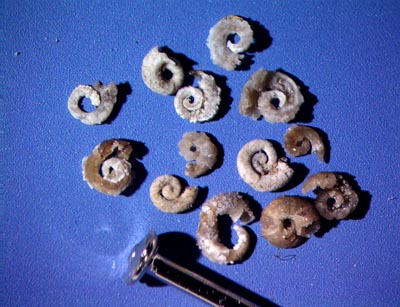 |
Microconchids
These annelid tubes are a minor part of the fossil assemblage however at this new
locality, we found scores of them in the acid residues. Although they look
much like coiled gastropods, they are annelid worms homes.
The article can be found here.
|
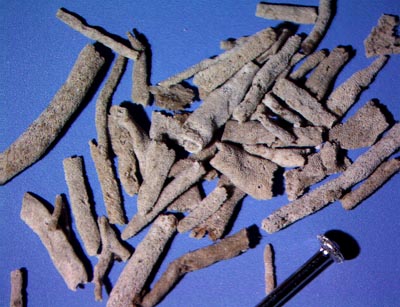 |
Bryozoans
Three types of small bryozoans have been found in our seived finds, and as
are all invertebrates from this formation - They are very small and fragmented.
But they help reveal the story of the conditions during this time in greater detail.
The article can be found here.
|
 |
Porifera (Sponges)
Sponges are very rare in our searches, only a few specimens were found
and all are calcareous types. One specimen was a fragment of either a flat
fan shaped sponge or a large vase shaped tube. The other specimens are flattened
tubes that were orignally round and quite hollow.
The article can be found here.
|
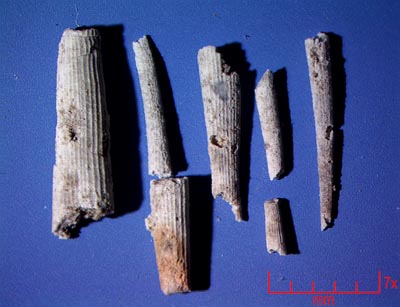 |
Scaphopods (Tusk Shells)
One of the larger macro fossils found in the limestones come in two
varieties, smooth and ribbed.
The article can be found here.
|
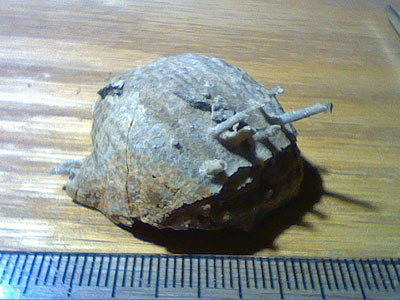 |
Brachipods
Dominated by productids, this minor faunal element shows once again that
nearly every invertebrate found is diminuative in size compared to the
overlying Permian Kaibab formation. A huge influx of terriginous sediment
is most likely the cause.
The article can be found here.
|
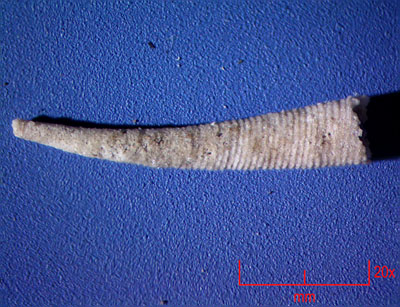 |
Permian Scaphopods II
Juvenile Teleoconchs
A not so rare and enigmatic fossil which turned out to be something very special!
The article can be found here.
|
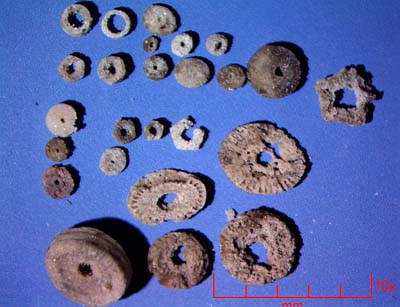
|
Echinoderm Stem Ossicles
Very few crinoid and blastoid stems were found in this formation. Here is
the pictorial of our finds.
The article can be found here.
|
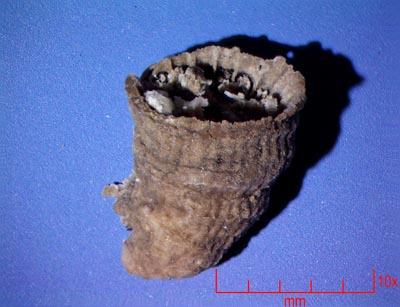 |
Cnidarians (Rugose Corals)
We found ONE tiny rugose coral in our searches in the acid fines.
That makes this one of the most precious finds in this formation. Its
a beauty though, and had a secret friend inside...
The article can be found here.
|
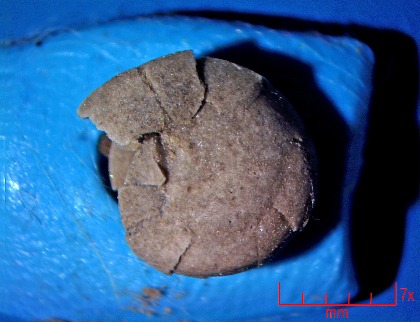
|
Nautiloids
Cephalopods are a minor but very important part of the Fort Apache Sea
fauna. They are epifaunal and would have been floating above the muddy
bottom which was a deterent to many invertebrates.
The article can be found here.
|
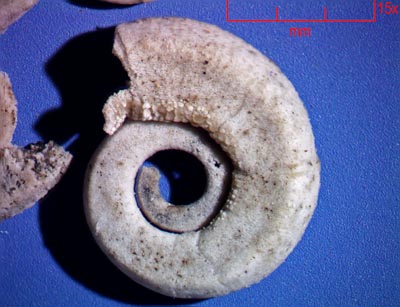 |
Straparollus Gastropods
This is the only planispiral gastropod we found in this formation. Two different
species were found in a huge range of sizes from pinhead sized up to 6 inches!
The article can be found here.
|
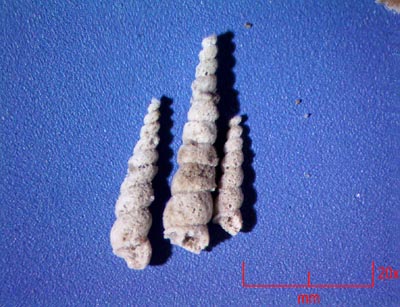
|
Gastrpods and Monoplacophorans
A massive project, since the dominant fossil by far were countless
pin head sized gastropods. 22 types were found, many of which we
were able to identify with Winters monograph.
The article can be found here.
|
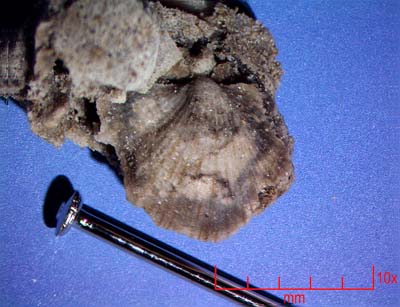
|
Tiny Pectens, Branching Bryozoans,
and Stellate Sponges
A few unusual and really interesting finds from the Formation.
The article can be found here.
|
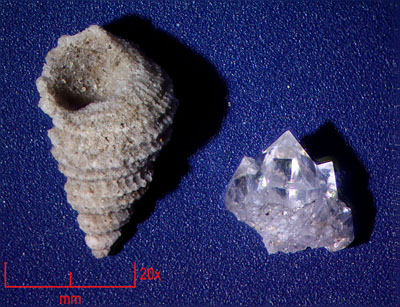
|
Quartz Microcrystals
Over a hundred pinhead sized crystals were found in with the fossils!
The article can be found here.
|
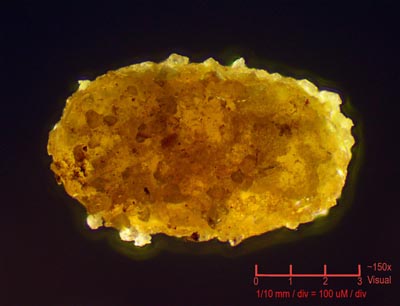
|
High Powered Microscope Images
Bright and dark field microscopic views of some translucent specimens.
The article can be found here.
| 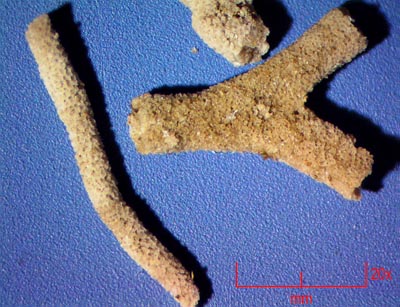 |
Random Sampling from a
hike in deep snow at the
Highline Trail Site
Stereo and standard microscope close ups from a rather different
type of fossil collecting expedition in deep snow here.
|
|

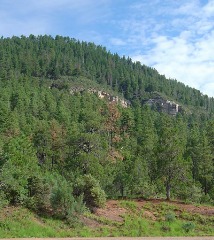 Fort Apache Limestone outcrop
along the Highland Trail
Fort Apache Limestone outcrop
along the Highland Trail Trilobite pygidium - One of the
rarest fossils found
Trilobite pygidium - One of the
rarest fossils found


























